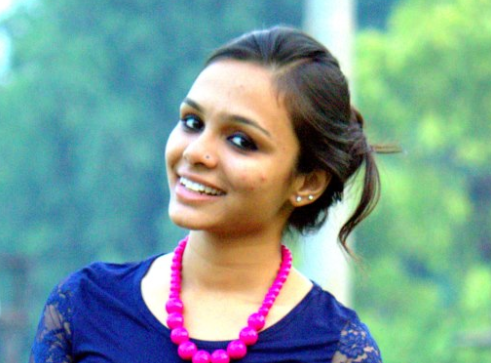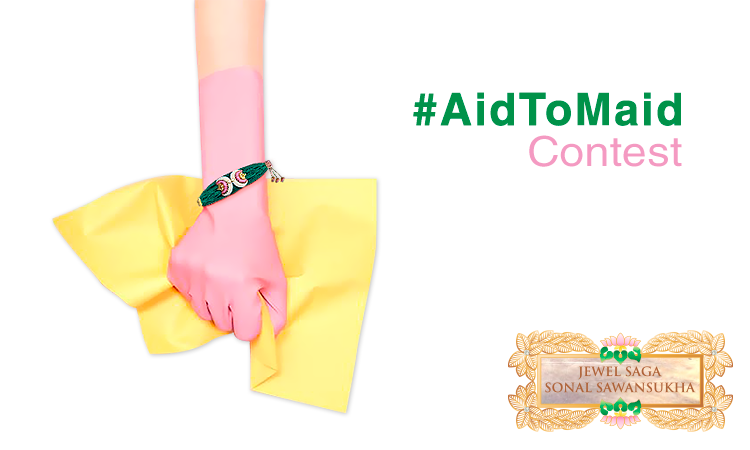
Mansi Khandelwal
IWB Blogger
Filmmaker Insia Tells Us How She Saved 4 Girls From Female Genital Cutting
- IWB Post
- February 4, 2017
Having pursued Advertising and Mass Communication in New York and worked in the U.S. for 12 years, Insia Dariwala’s career spans across various fields. She is an award-winning international filmmaker and one of the founder members of Sahiyo, an organization that seeks for a collective solution towards ending the practice of Female Genital Cutting.
Insia’s hard-hitting and impactful debut short film, ‘The Candy Man,’ won her two Best Director awards in India and was also nominated at the New York Short Film Festival & Barcelona International Film Festival.
The candy man is a story about a young man Sachin who has been sexually abused as a child by his very own father. Despite trying hard to get rid of his dark past, he fails. The issue of child sexual abuse and the ever hitting memories is depicted in this award-winning documentary.
In a very empowering conversation, Insia shared her insightful experience with us.
“I staunchly believe that if you have to lie about something, there is definitely something wrong in that.” Having successfully managed to stop four circumcisions, and working towards educating people about the age old tradition of Khatna, Insia said, “If they don’t like it being done to them, then why to do it to their children!”
Me: How do you reach out to the Bohra community?
Insia Dariwala: We have mostly used our social media to reach out to Bohris. We had also done the first ever online survey on Khatna which involved Bohri people from 17 countries around the world. To spread the word even further, we conduct workshops because there are so many people who are not even aware of what had happened to them. We also connect with NGOs who further connect us with Bohri women.
However, we have had our share of difficulties in this process. Social media backlash, people telling us that it is wrong on our part to stop a religious practice, etc are some of them. But our motive is to actually educate people about the hazards of this practice. We come from a very peaceful space, and we have no intention to antagonize anybody. So if a 7-year-old has undergone a cut, her mother or grandmother might have done it with the best of their intention, but what has happened to that young girl is something that is never discussed and the child then has to grow up with the memories of that pain.
Me: Having experienced child sexual abuse at a young age, how has it affected your self-confidence in relationships with men?
Insia Dariwala: Well, it was not just my relationship with men that got affected, post the abuse, but in general, with almost everyone. The memory from the past has obviously had an impact on me. I used to be a very guarded person and trusting was never easy. However, I have healed now. I am not the product of my abuse anymore.
Me: What are the conversations with the Bohri women like?
Insia Dariwala: I feel empowered while connecting with people. Knowledge is the best weapon to combat ignorance. So when you sit down with a mother who has been cut or is contemplating cutting her daughter, it helps to come from a space of knowledge. More so since this practice is merely based on a presumed religious belief and not any scientific evidence.
Me: What are the alternatives to Khatna according to you?
Insia Dariwala: Why should there be any? Alternatives exist to simplify life, not complicate it. An alternative to khatna would just complicate things. But if we were to talk about the rite of passage, then, of course, there can be so many painless and perhaps more meaningful rituals that can be passed on from one generation to another. Now that I think about it, maybe Sahiyo could do a poll within the community of what could be a better alternative for this rite of passage.
Me: Share with us your most emotional experience while working on your short film, ‘The Good Girl’ that addresses Female Genital Cutting.
Insia Dariwala: ‘The Good Girl’ is not yet made, but is ready on paper. The writing process was draining. While researching and creating characters, it got emotionally challenging, as every character was someone I knew. The payoff though was that I did create the impact I wanted to. I made some men read my script, and also a few women. Some men said they felt pain in their groins, some women cried, and these are people from my industry. They have read many scripts, so it was overwhelming to see this reaction. When my story ‘The Uncut’ was published in Cafe Dissensus, a New York-based magazine, many women from the community wrote in to tell me how they related to what I had written. So for me, all my writings are emotionally draining and satisfying too, because they deal with the real life issues, the ones which not many want to face.
Me: While educating children under ‘The Hands of Hope Foundation,’ what did you learn and what story of a girl moved you the most?
Insia Dariwala: Let me correct you here. The Hands of Hope Foundation’s philosophy is to make this world a better place, one ‘child’ at a time. In essence, that basically means all children, irrespective of their gender. I believe boys need protection as much as our girls do. Not acknowledging this fact is what’s made India one of the largest countries with regards to Child Sexual Abuse (CSA) statistics. Hence, I plan to correct that soon by making the first ever Male Child sexual abuse video campaign in India. We as a society, need to understand and accept that our girls and women will only be safe when the boys are safe.
So what story moved me most?
There are so many that I don’t even know where to start from! Fathers raping their daughters, uncles sexually abusing their nephews, ten-year-old boys being offered money in exchange for sex in the slums, the list is endless. Basically, every story that involved a child’s basic right to life being denied, moved me.
Me: What other topics would you like to touch while making your next documentary?
Insia Dariwala: Umm, there are quite a few. I do both fiction and non-fiction films, but fiction really excites me, so would surely like to see my fiction on FGC, ‘The Good Girl,’ to make some momentum soon, and maybe post that I will explore the complexities of human relationships across borders, for my next venture.
Me: Having studied the issue in depth, who do you think is usually behind pushing the girls towards Khatna?
Insia Dariwala: It’s a misplaced religious belief. It’s a belief that allows adults to carry out a certain tradition, even if it is harmful. People need to stop looking at this as a religious issue. It is not. It is a Child Rights Issue. Only when we can bring in compassion and see how this ritual can impact a 7-year-old girl’s mind and body, there will be a room for change.
Me: Have you faced any personal threat while raising your voice against this practice?
Insia Dariwala: Well, not directly, but indirectly yes. Have got a lot of hate emails and trolling. But I knew what I was getting into right from the start, so it does not deter me.
Me: While studying and educating people, what method did work best in creating awareness? (Visual knowledge, real-life accounts, books, etc.)
Insia Dariwala: Real life accounts told visually work well. Today the attention span of people has gone down to a mere 3 seconds. Visual medium hence is the best way to hook an audience to your story.
Me: What kind of visual art do you use under ‘The Hand of Hope Foundation to educate children and how does it impact their lives?
Insia Dariwala: Films definitely connect with kids, so the organization has now come up with a puppetry animation video on how children should respect and protect their bodies. If they start connecting to the characters, chances are they might learn positive things from it too. The organization has also put up an art installation on child sexual abuse this year, at the Kala Ghoda Arts Festival in Mumbai, called ‘Betrayed.’ This art was able to engage 1.5 lakh people, and also educated schools and parents that visited the festival. My film on child sexual abuse, ‘The Candy Man’ has managed to get a viewership of 3.5 lakh people so far. So yes, I am personally of the belief that Art has the power to trigger a dialogue on issues that society wants to ignore. It has the power to make people uncomfortable which I think is quite needed today, given the fact that we are living in an apathetic society.
Me: How do you think women who had undergone a cut should share their feelings with their partners?
Insia Dariwala: I think there has to be some form of communication at all times, especially when it has to do with intimacy between two people. I think it would really help if women and men both could be open about issues plaguing their personal lives. Unfortunately, though, there is a general lack of communication between a man and woman, irrespective of whether they are cut or not.
Me: How can the masses and schools access your documentaries?
Insia Dariwala: Some of them are available on youtube, example ‘Cock-Tale’ and ‘The Candy Man.’
Me: Those girls who have experienced sexual abuse at a young age, how do you think they can be made aware of or educated about the same?
Insia Dariwala: Well, it’s not just girls but boys too that need to be educated about sexual abuse. So the best way to educate kids is to start talking early on about their bodies, and how to safeguard it. Don’t we teach our kids how to protect themselves from any dangerous calamity so why not sexual predators too? Schools should start making body safety mandatory in their curriculum.
Also, what I have noticed from my stints in schools, is that children have an inherent disrespect for someone else’s bodily privacy or space. Hence, when you start teaching the basics of RESPECT to a small child, their adulthood gets sorted. If you ask me, Empathy, Compassion and Respect hold a lot of significance in my life. I feel parents and schools should focus on imparting that, besides academic knowledge.
Me: Who has been your favorite companion in childhood – fictional/non-fictional?
Insia Dariwala: Me, Myself and I 
Children of my age thought I was too serious and sensitive and so I was a loner most of the times. I was popular, friendly, but a loner. I loved to read comics so Phantom, Tarzan, Archies, Tinkle, I saw myself in all of them. I had built many fictional characters in my head, so they gave me company. I did have a lot of fun with kids who were like me, though, abnormal in their own way!
Me: Who has always been your secret keeper?
Insia Dariwala: Ohh, that’s a tough one! My heart I guess. It has held so much in it, like a vault. And when I was growing up, my sister was my secret keeper.
- The best book you have read: The one I am writing.
- The best memory: The one I am creating in this moment.
- The best gift you have received in 2016: A chance to live through 2016.
- Your biggest victory: Every time I save a child from abuse.
- 0
- 0

Current Discussion
Popular Post
-
Indian Women
STEM Initiative Taken By These Sisters Are Changing The Lives Of Underprivileged Indian Girls



